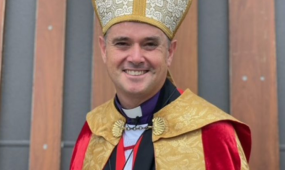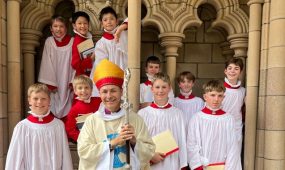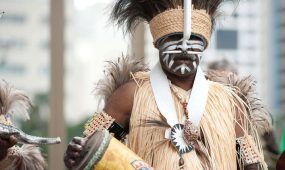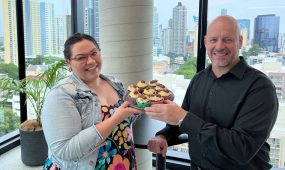Q&A with new ACSQ RAP Coordinator, Aunty Sandra King OAM
Spotlight Q&A
Meet Sandra King and find out about her role as the new ACSQ RAP Coordinator, where she does her best thinking, the highlights of her time as a fashion model and what person of faith inspires her the most and why

Aunty Sandra King is an Aboriginal Elder, community leader, businesswoman and former trailblazing fashion model. She is the proud mum of two daughters.
How long have you been involved in the Anglican Church and in what role?
I am a Quandamooka (Stradbroke Island) and Bundjalung (Tweed Heads) woman. I started work as the ACSQ’s Reconciliation Action Plan (RAP) Coordinator in December 2019.
What does your role involve?
Supporting the engagement of parishioners, clergy, staff and other agencies in implementing the Anglican Church’s Reconciliation Action ‘Innovate’ Plan through effective communication, coordination and administration of the RAP across our Diocesan community.

On 12 February, our Reconciliation Action Plan Working Group met for the first time in 2020, taking the opportunity to yarn about the artwork commissioned by the Parishes and Other Mission Agencies Commission (PMC). The dot paintings were created by young Kabi Kabi, Koa and Yuin artist Stevie O’Chin for the Archbishop’s 2020-2022 ‘Being Together’ Diocesan themes. (L-R): Stephen Harrison, Tim Reid, Patrick Meuleman, Sandra King OAM, Fr Bruce Boase, Fr Richard Browning, Stephen Hart, Olly Yasso, Jean Anderson and Meredith Walker AM
What projects and activities are you currently working on?
I’m currently working on presenting the ACSQ RAP ‘Innovate’ proposal, as well as finalising the list of First Nation peoples living in parish areas and preparing programs for Reconciliation and NAIDOC Weeks, to name a few. There is a lot of planning and discussion involved in presenting various programmes for all areas of the Diocese regarding Reconciliation. We have over a hundred years of trauma, heartache and ‘sorry business’ to deal with when it comes to reconciling Christian churches and Aboriginal and Torres Strait Islander peoples. We all have to heal each other, learn to trust again, acknowledge and accept the past, regain our faith and move forward together.
Advertisement
One of the first steps to Reconciliation is learning Australia’s history and I had the opportunity to present the Untold Histories Program, as well organising an International Women’s Day luncheon with First Nation women speakers. I have also shared my views on the National Apology and why ‘Welcome to Country’ and ‘Acknowledgement of Country’ are important through anglican focus.
What have been the highlights of your roles so far?
I love the challenges that the RAP presents, developing programs and getting to know work colleagues. I also love the enthusiasm generated from the RAP Working Group.
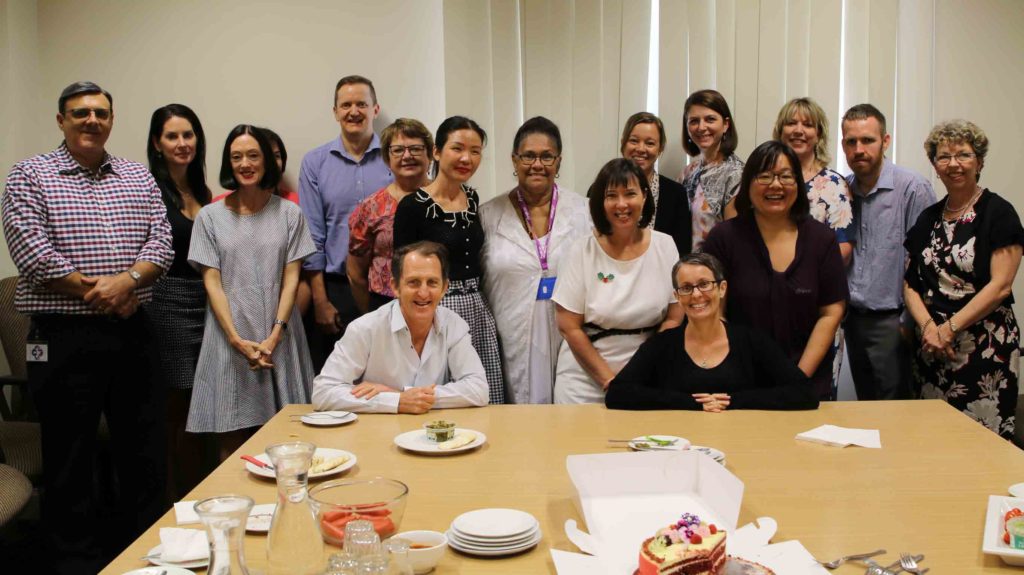
General Manager Office staff welcomed new Reconciliation Action Plan Coordinator Aunty Sandra King with a morning tea on her first day at the ACSQ on Tuesday 3 December 2019
What are your plans and goals for the next 12 months?
To present programs that will help heal the ACSQ and my people from what has happened in the past and to broaden awareness and change the negative perceptions of Australia’s history and our First Nation peoples.
You were recently awarded an OAM on Australia Day for ‘service to the Indigenous community’. Where were you and how did you feel when you were notified that you were to receive this honour?
Advertisement
I was at my Cathedral Precinct desk when I received the email. I wanted to scream with excitement, but I had to control it and try to keep it a secret. Well, I failed as Claudine, who sits nearby, heard my squeal! I’m still overwhelmed and very grateful. I love what I do for my community, especially for our disengaged women, youth and Elders. Michelle Obama’s quote pretty much sums me up: “Success isn’t about how much money you make…It’s about the difference you make in people’s lives.”
Why is it important for the community to mark Harmony Day?
In my view, Harmony Day is about engaging, educating and empowering each other to move forward together.
How is Harmony Day of importance to First Nation peoples and the process of Reconciliation?
It’s not only important for my people’s history, culture, connection to country and truth-telling stories to be acknowledged and accepted, but the same goes for all people of different nations, which are all part of Reconciliation.
This year’s Diocesan theme is ‘Being Together: Practising Peacemaking’. What are some practical ways that we can implement peacemaking?
Don’t be afraid to ask questions. Have an open mind. Listen. Step up and speak up if you see racism raising its ugly head in discussions in the workforce, among friends or in the home. If possible, attend a First Nations event or invite a First Nations colleague or his/her family to dinner or to a family BBQ.
Can you tell us a little about your personal faith journey?
Since I was young, I always knew that God was always there when I cried, laughed or experienced traumatic events or significant life encounters. Sadly, my Uncle, who was a Pastor of a Parish in Townsville, tragically passed away before he could baptise me. To marry my former Greek/Cypriot husband in his church, I had to be Baptised, so with my parents’ blessings I became of Greek Orthodox faith in 1980 and have continued to be.
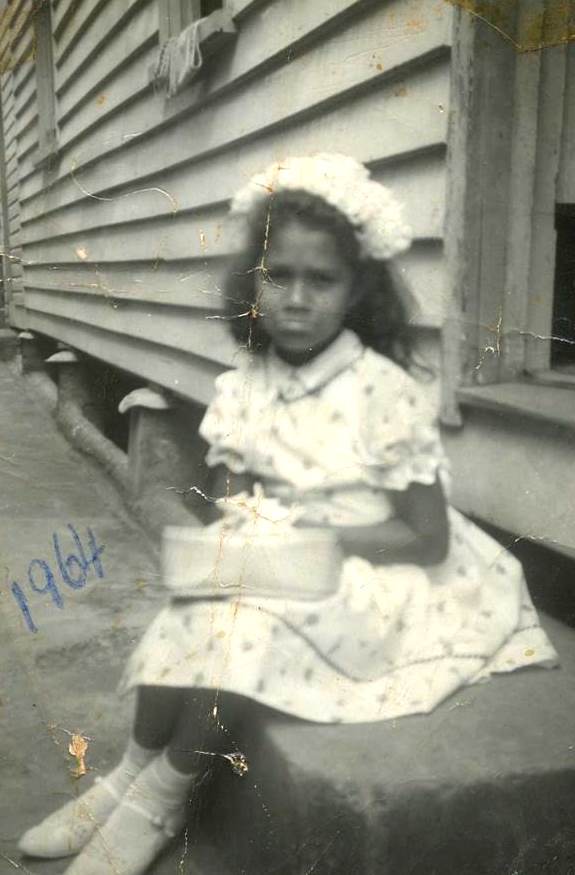
“Sunday School, 1964: as you can see, I am really happy…not! Combing my hair for mum was a nightmare for the two of us, as I slept with bubblegum in my mouth and it got stuck to my hair!! Mum didn’t succeed in combing the gum out, so she just plonked the hat on my head!”
How does your faith inspire you and shape your outlook, life choices and character?
When I look back, it seems that every part of my life’s journey (from childhood to now) has always seen me breaking down walls or entering unknown territory, and while there are a lot of heartaches, I wouldn’t change anything. I do ask, ‘Why me?’ and eventually (yes, I am a bit of a ‘hard head’) I get my answers. My ‘Silent Partner’ (God) is pretty ‘deadly’, you know (‘deadly’ is a word we say when describing someone or something that is brilliant, amazing and beautiful or simply the best).
What is your favourite scripture and why?
“Be strong and courageous; do not be frightened or dismayed, for the Lord your God is with you wherever you go (Joshua 1.9).” My life as an Aboriginal daughter, girl, woman, mother, Aunty and now Elder, has its challenges in Australia.
What person of faith inspires you the most and why?
Mother Teresa because of the beautiful work she did selflessly for people living in poverty and the way she extended love and hope to everyone she touched. And, of course, my mum because she taught me about who God is and about the faith, and the same goes with my family.
What is the kindest gesture you have ever received or witnessed?
Wow…from the smallest to the biggest, all of them have impacted me. From just being there for someone or volunteering or presenting programs, I have been very fortunate to receive many kind gestures.
Hugs and tears from disengaged women, troubled teens and women of all ages hit me hard and I will always be grateful that I was in a position to help them to believe in themselves, face their challenges and learn how to make positive changes with their lives.
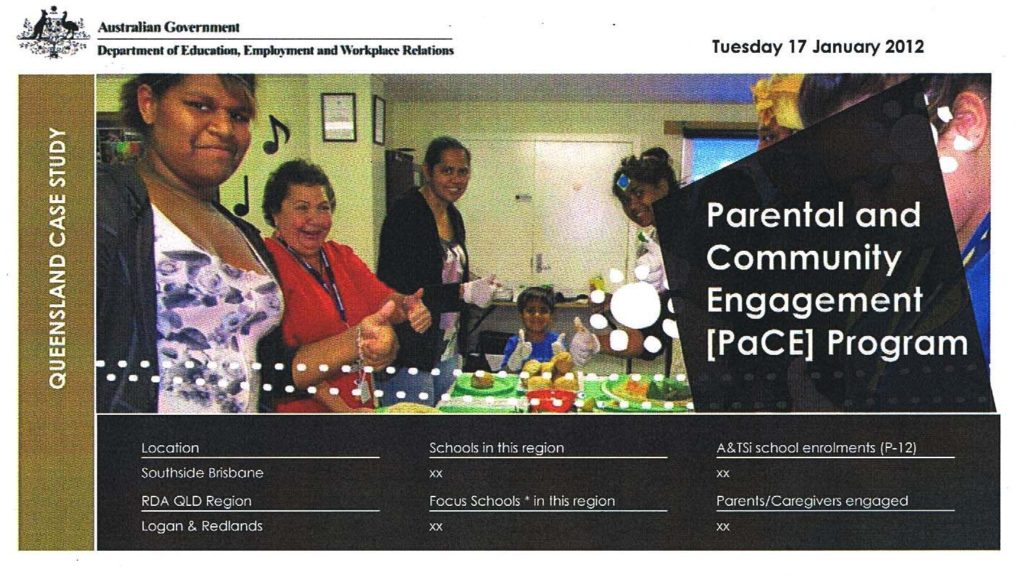
“I was contracted to present my I.C.A.N. (Indigenous Community Aspirations Network) for Women program, where I met many disengaged Aboriginal youth and women. I called my monthly programs ‘Black 2 Basics’ and I am proud that I had one of the highest monthly attendances throughout my contract.”
What is the best piece of advice you have ever received and who gave you this advice?
My parents have always told me to make the most of what you have, not to give up, not to judge others in the same way you have been judged, and that no matter how you dress or what you do, you will always be black (Aboriginal).
What do you do in your free time to recharge and relax?
Related Story
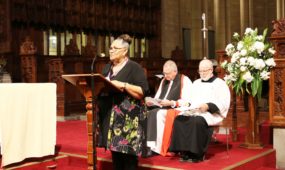 Features
Features
Why are ‘Welcome to Country’ and ‘Acknowledgement of Country’ important?
I love being around my mad family, going to dinner with friends (a group of prominent Aboriginal women meet often and discuss women’s community matters over dinner and we call ourselves ‘B.A.B.S’ – a name that is a secret to us). When at home by myself, I love having a glass of scotch or port while listening to my music. I did love doing tapestry, but family and lack of free time put an end to that. A great massage can do wonders, too!
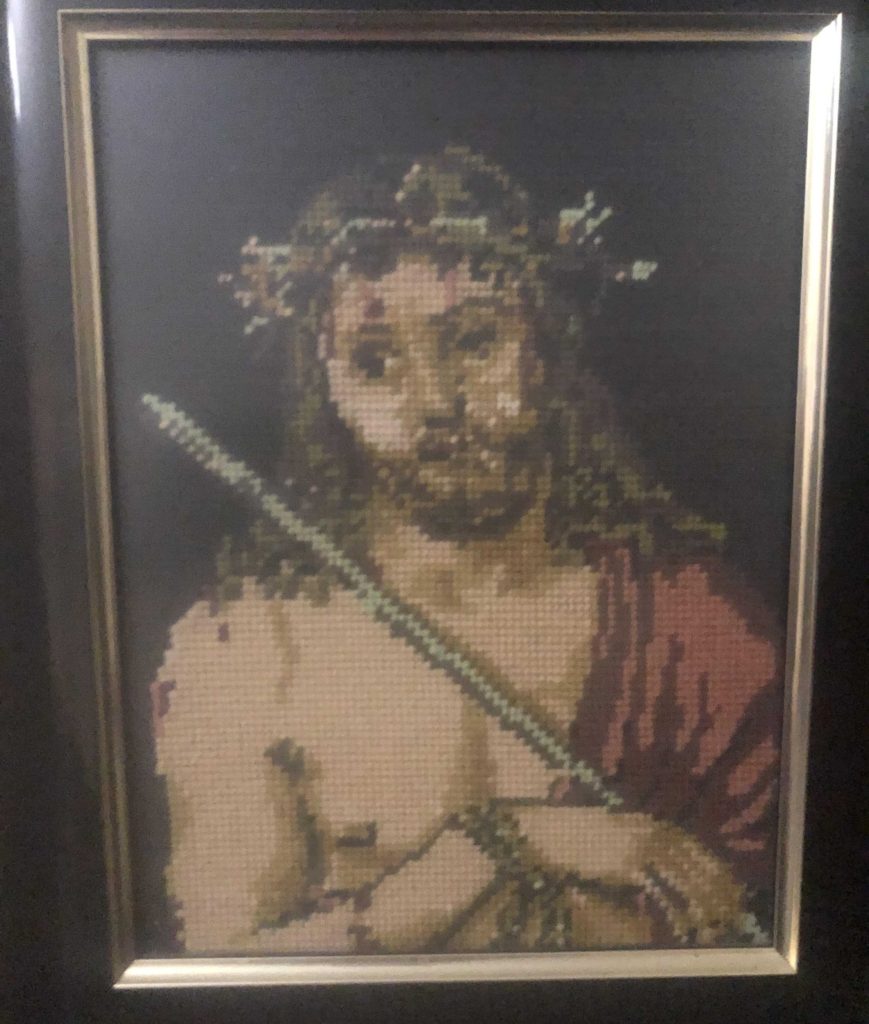
“I’m not an expert in tapestry, as you can see, but I found it calming. This one of Jesus was my first, from 40 years ago, after I got married.”
In your younger years, you were a trailblazing fashion model. What were the highlights of this time and why?
The highlight was my first audition for a commercial, which was a national one for Myer’s Miss Shop. I was up against beautiful professional models who were dressed in designer clothes and here I was, walking in with my afro, big earrings, denim shirt and flared jeans with big cork shoes…I got the main role and I was booked the following year to do another commercial.
It took four years after completing my courses to become a professional model in a time when Aboriginal people were still struggling to be accepted as fellow citizens and as equals. It was also the beginning of a dream career for an Aboriginal girl who lacked confidence and stuttered. It was the only career I could think of as a young girl, where I didn’t have to speak!

“A Telegraph newspaper photographer came to my place to take photos of me getting ready to celebrate NAIDOC Week. I think this might have been 1977.”
If you could have a billboard with any text on it, what would it say and why?
The lyrics to John Lennon’s ‘Imagine’. I think everyone should know the words to that song.
Where do you do your best thinking?
Two places – at home listening to my music or in the car
What is your favourite memory as a mum?
This is perfect for grandparents to do for their ‘grannies’ (grandchildren). When my girls were learning to ride their tricycle bikes, mum and dad made a carousel with their clothes line. Dad tied two old dog leads on opposite ends of the clothes line and then tied it to their bike handle bars, so that they were upright. Mum had balloons on strings tied all around each clothes line row with streamers as well. The girls jumped on their bikes and chased each other around and around with balloons and streamers flying up in the air to the music playing on the radio. My girls were the envy of all the kids on the block with their very own carousel. When we came to pick our girls up, I had tears when I saw them giggling with the neighbour’s children on their bikes. Making the most of the very little you have…a wonderful and beautiful memory for all of us.
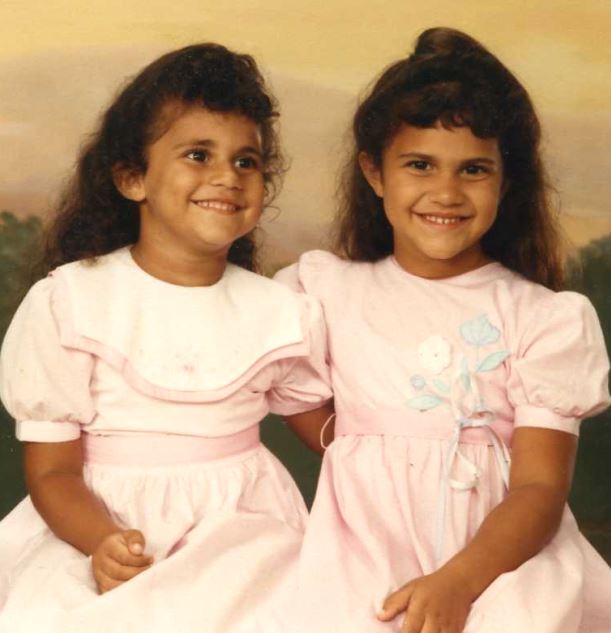
“This was a family photo session in 1988. The age difference between my two daughters is only 16 months, so everyone thought they were twins. The best thing any parent can hear is when your child says she had the best childhood memories and laughs while growing up.”
What’s your best childhood memory?
Being invited to a school friend’s birthday party in Year 4. This is the only birthday party I was ever invited to.
If you are having a bad day, what do you do to cheer yourself up?
Talk to family and closest friends first for they are direct, loving, honest and at times totally Womba (mad/funny). I then have a chat with my silent partner (God), as I know there is always a lesson to be learnt from those times.
What’s your unanswerable question – the question you are always asking yourself?
Why me?

